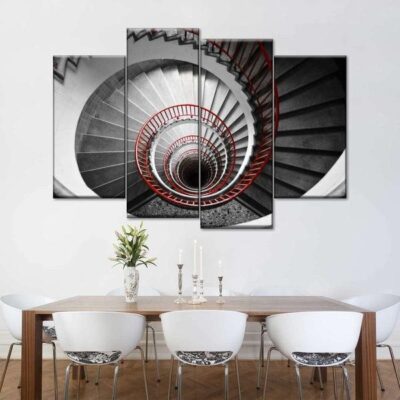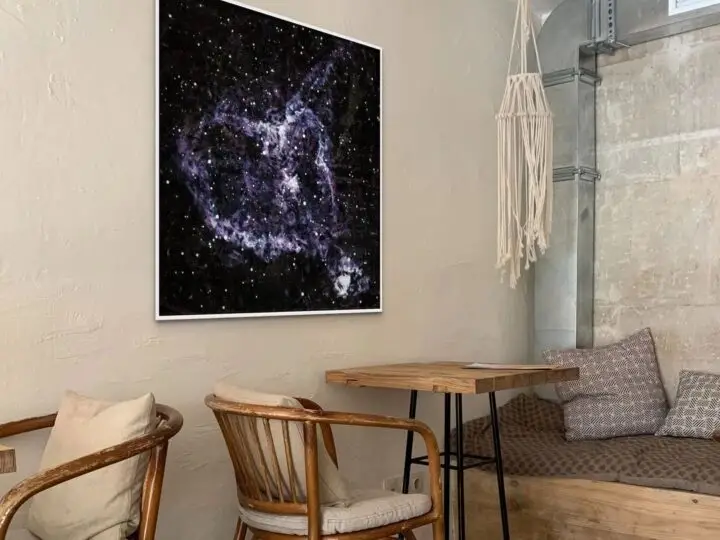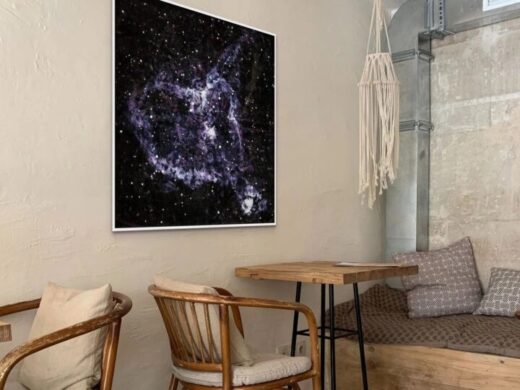Galaxy Art and Night Art guide, Property space interior advice, Planets decor style
Galaxy Art and Night Art: An Overview
20 July 2022
Planets like Jupiter and Mars are commonly pictured as celestial bodies that may be seen from Earth. However, for millennia, the ancient Greeks and subsequent generations distinguished between Earth, the nucleus of the cosmos, and the other planets. The planets were viewed as small lights in the sky that rotated around the Earth.
As with science fiction, astronomy and astrophysics owe a lot to the dedication and talent of space painters. Artists were able to depict the universe in a way that even the most talented wordsmith couldn’t. Rather than being just speculative, these worlds revealed a reality that could never be captured by a shaky telescopic snapshot of Earth’s twins.
Today, we have more information. Despite its position at the solar system’s core, Earth is one of many planets in our galaxy. Notwithstanding its name, it does not have the distinction of “center of our solar system.” The Moon and hundreds of manufactured satellites orbit Earth, and that’s all there is. Seven planets, Pluto and many other “dwarf planets,” a slew of moons, a ring of asteroids, and millions of comets all share space with Earth in our solar system. Yet, the only place in our solar system where we’ve found evidence of life is Earth, and that’s all we know for now.
In the minds of humans, Earth has slipped from its lofty perch as the nucleus of the cosmos to its more humble but no less significant position as our home planet. And there’s no place like home in the entire solar system.
Astronomers refer to Earth as a “terrestrial planet” because “terrestrial” means “earthly.” A planet made of rock that orbits the sun is the scientific definition.
Bring home personal space art prints to your home and start connecting to the realm beyond. Shop Agnes My Universe for some mind-blowing paintings.
The Relentless Passion in Night Art
Astronomical artists do the same if any painting needs a purpose beyond its existence. A common misconception about space painting is that it is merely an educational tool, similar to how early science fiction editors like Hugo Gernsback relied on a panel of scientists to certify their novels were factually accurate. The accuracy of astronomical art, like the likeness of a portrait, is not the sole reason for a painting’s existence; it can also serve other purposes.
Inner core iron solidifies due to the high pressure of the above layers. The solid core at the center becomes more prominent as the surrounding core cools like an ice cube swelling as the liquid around it cools down over thousands of years.
Scientists have used radioactive dating to estimate the age of Earth’s oldest rocks at 4 billion years. Earth, on the other hand, is unquestionably older than that. This is because rocks on Earth’s surface are constantly destroyed by erosion, mountain formation, and volcanism; thus, the original rocks are long gone.
Early scientists entertained the possibility that the maria were oceans. But if they were oceans, you’d be able to see vivid reflections of the sun from their surface, similar to what you see when you look down at sea from an aircraft during the daytime. Instead, the lunar highlands, shown by the larger, brighter areas in the Man in the Moon, are regions that have been significantly cratered.
Craters can also be found in the maria; however, there are more miniature craters per square mile than in the highlands, indicating that the maria are younger. Massive impacts were responsible for forming the basins in which the maria are found.
These hits eliminated any craters that had previously been present. In later years, the basins were filled with lava from below, obliterating any newly formed craters caused by the massive impacts. All the craters currently visible in the maria result from impacts after the lava had solidified.
It’s challenging to strike a delicate balance between accuracy for its purpose and a wholly creative interpretation. Regarding astronomical and astronautical themes, Kara Szathmary is one of the best. However, it’s impossible to convey the full range of emotions using a solely representational image like this one.
Space Art Landscapes
It looks as though space art is gradually coming into its own, not only being accepted by the art community as a genuine genre in its own right but also, and this is of utmost importance to space artists, being recognized by scientists as well. Every year, significant exhibitions of space art are held at museums, planetariums, and other types of organizations.
At the very least, astronomical painting and hardware art can be thought of as distinctly separate subgenres that fall under the umbrella of space art. The former is an expansion of the art form known as landscape painting, which has been practiced for millennia as a visual expression.
The Pre-Raphaelites were a school of painting that sought accurate observation and depiction of nature. They also paid meticulous attention to accurately imitating nature in their work, where the roots of astronomical art may be found. It adheres to many of the same principles as any other form of successful landscape art.
Hardware art is concerned with the technology utilized in space exploration, and its practitioners are more interested in how people go somewhere as opposed to what they will find once they get there. Because their work is so focused on accurately portraying technology, hardware artists have a considerably more difficult time detaching themselves from the responsibility of providing the technical illustration.
There is, of course, some wiggle room between the two categories of artistic expression. There is no obstacle in the artistic way of an astronomy artist depicting a spaceship in a painting, nor is there any obstacle in the way of a hardware artist putting a spacecraft in an attractive location. Some artists can handle two genres of art with the same level of expertise.
The few artists who concentrate on designing extraterrestrial life forms are perhaps the most inconspicuous subgroup, but they also present the most significant challenge in classifying their work. These aliens are not necessarily fictitious creatures but as carefully conceived as any paleontological recreation.
Comments on this Galaxy Art and Night Art: An Overview article are welcome.
Home Improvement
Home Improvement Posts
How to choose the right art for your walls

Metal wall art: perks and things to consider

Wall Art for Different Interior Styles

How to combine colors for interior design
6 common interior design mistakes to avoid
Home styling tips to decorate your house
Home Wall Art
Wall Art Posts
Tips to decorate your office with architectural wall art
How Wall Art Can Boost Your Home Value
How to Spruce Up Your Home with Personalized Prints
Home Articles
Residential Architecture
Comments / photos for the Galaxy Art and Night Art: An Overview page welcome







